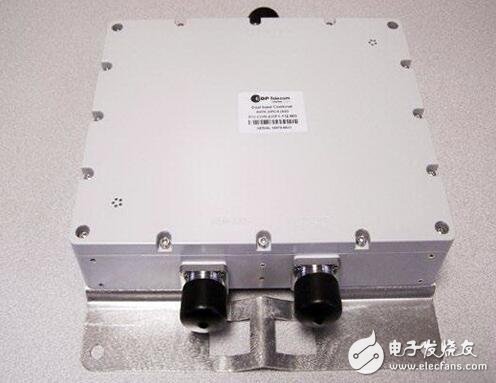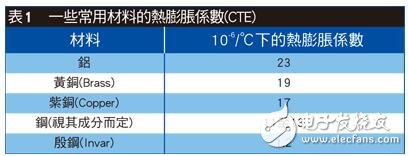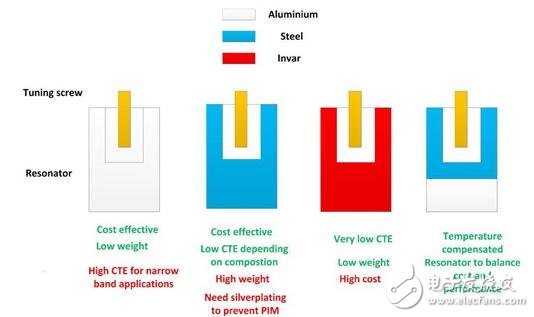Radio frequency (RF) filter design continues to face electrical, mechanical and environmental challenges. For example, the system must meet the specified size and size, the ambient temperature will shift the frequency response of the filter, and the material of the casing will affect the performance of the filter. Designers must make trade-offs from these factors from the outset in order to design a solution that meets their needs.
There are many challenges in designing filters to meet known requirements. These requirements are primarily in electrical, mechanical and environmental aspects. Constraints proposed from system level design, such as mechanical dimensions, are often of high importance. This article will discuss the major RF (RF) challenges in the filter design process.
First, this article will show the drift of the frequency response at different temperatures with an existing product. This drift in frequency response is very important and should be kept in mind before the design process begins, as the response will change depending on the filter's operating environment.

Figure 1: COM-2J1F1-1Y2-000 duplexer
Next, the setup of passive intermodulation (PIM) measurements will be introduced, which may be the most challenging specification in meeting the filter product requirements, mainly due to the lack of accurate simulation tools and inaccurate measurements. To clearly illustrate the testing process, a block diagram of the test is also provided. The uncertainty in this measurement will also be presented and some influencing factors will be discussed.
Finally, the trade-off between insertion loss and narrow bandgap suppression is explored, and some examples of filter synthesis are provided to illustrate the trade-offs between requirements. However, under the constraints of this, it is likely that all the requirements cannot be met, especially in a limited space. Therefore, the filter designer must ask the customer to prioritize the different requirements.
Effect of temperature on filter performance
The effect of temperature on the out-of-band rejection of the filter will be explained here, so the COM-2J1F1-1Y2-000 duplexer (Fig. 1) produced by Molex's SDP Telecom is a dual-band combiner.
Since the isolation between the various bands of this unit is extremely high ("50 dB"), Band 1 can be regarded as a dual-band filter, and Band 2 can be regarded as a simple filter. Since the dual band filter is beyond the scope of this article, focus will be on Band 2. Incidentally, all the resonators in this duplexer are made of aluminum.
Figure 2 illustrates the measurement of this band at three temperatures: -40 ° C (low temperature), 25 ° C (ambient temperature) and +65 ° C (high temperature). It can be seen from the figure that the temperature change has a certain influence on the suppression of the filter. For known attenuation values ​​(the example of Figure 2 is about -30 dB), it can be seen that the drift from low temperature to ambient temperature is about 2.9 MHz, and the drift from ambient temperature to high temperature is about 2.3 MHz.

Figure 2. Transmission performance of duplexer band 2 at three temperatures and a partial enlarged view
In general, for the center frequency of known materials and filters, Equation 1 can be used to predict frequency drift:
Δf = δ ΔT f0 (1). . . . . . . . . . . . . . . . . . . . . . . . . . . . Formula 1
Where δ is the thermal expansion coefficient at 10-6/° C, ΔT is the temperature change, and f0 is the center frequency of the filter. Table 1 lists the delta values ​​of some commonly used materials.
Apply Equation 1 to some examples, taking into account δ = 23 10-6 / ° C (aluminum) and f0 = 1922 MHz. In the case of low temperature, ΔT = 65 ° C, so Δf ≈ 2.874 MHz, and in the case of high temperature, ΔT = 40 ° C, so Δf ≈ 1.668 MHz.
It can be found that the measurement result is consistent with the calculation result of Equation 1. Some errors can be attributed to the shape of the resonator and the interpolation approximation (InterpolaTIon ApproximaTIon). Therefore, Equation 1 can be used to predict frequency changes in the case of temperature drift. The value of CTE δ does not need to be too high to avoid significant changes in attenuation performance, especially for a wide range of temperatures.
It is important to consider some important factors when choosing a resonator material, including cost, weight, manufacturing method (stamping, die casting, etc.) and silver plating to prevent PIM from occurring. Figure 3 illustrates the trade-off between the three commonly used materials in the filter.


Figure 3. Tradeoffs between different resonator materials
Aluminum is generally less expensive and lighter in weight, but has a higher coefficient of thermal expansion (CTE) and may not be suitable in the case of stringent specifications. Steel is more cost-effective and has a lower CTE depending on the composition, making it a good choice for narrow-band applications. But steel is a ferromagnetic material (FerromagneTIc Material) that needs to be silver plated, which will increase the total cost. Invar is basically an alloy of nickel and iron, which has extremely high thermal stability, but the cost is also very high.
Temperature compensation for low cost solutions using resonators of different materials (such as steel and aluminum shown in Figure 3) is a common method. This approach finds the best balance between good performance and affordable cost of the final product.
Technical index
Methods: oxygen pressure swing adsorption
lnhalation: ear oxygen inhalation, nasal oxygen suction
Input power.150w
Rated voltage:AC 110V/60Hz
Rated current:1.4A
Oxygen concentration: 30%-90% adjustable (rnom temperature,0.1MPa)
Oxygen flow:2-10L/Min
Oxygen pressure:0,03-0.06L/MPa
Carbon dioxide: according to the prescribed method of test qualified
Carbon monoxider according to the prescribed method of test
PH: according to the prescribed method of test qualified
Shape identiication: dorless, colorless gas,a combustion supporting force
Running noise:<45dB
Product size:358×231x321mm
Product net weight:6.5Kg
Electrical classification: class B
Display control:LCD screen display intelligent chip control, wireless remote
control
oxygen machine portable, oxygen machine for sale, oxygen machine amazon, oxygen machine for covid, oxygen machine india
Jiangmen soundrace electronics and technology co.,ltd. , https://www.soundracegroup.com